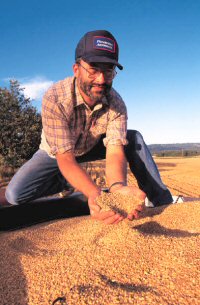


Making the Case > Bottom-Line Benefits > Why Is It Worth Encouraging Older Adults to Be Active?
 Personal Benefits
Personal Benefits
The bottom line is “move it or lose it” — physical inactivity makes your body age faster. The personal benefits of maintaining a physically active lifestyle are many, such as:
-
Maintaining independence.
-
Improving bone health.
-
Strengthening muscles.
-
Improving cardiovascular health.
-
Reducing the risk of chronic disease.
-
Managing chronic disease symptoms and their progression.
-
Reducing falls and improving recovery from a fall.
-
Sleeping better.
-
Maintaining weight.
-
Improving mental health.
Community Benefits
The community benefits are just as many. Healthy older adults:
-
Are able to participate in the workforce and volunteer sector later in life.
-
Decrease the load on local physicians.
-
Visit the emergency room less often and have fewer hospital stays.
-
Enter higher care facilities such as lodges or long-term care later.
-
Are able to stay in their own rural communities.
-
Need to access fewer expensive health-care interventions (usually only available in urban centres).
-
Contribute to the local economy into a later stage in life.
Built environments that support active older adults support the entire population, from children to adults and people with disabilities. Good design for older adults is good design for all.
Importance of the Determinants of Health
There are 12 factors in all that individually or collectively influence health.
All of the determinants can affect physical activity participation. In turn, physical activity is one of the recognized strategies that can affect other determinants. Some determinants are fixed from birth, such as our gender or biological make-up.
We can influence other determinants, such as the following:
-
education and literacy
-
income and social status
-
social support networks
-
coping skills
-
health services
-
physical environments
-
culture
It’s important to consider these determinants when making community decisions about physical activity promotion.
For example, let’s say that community leaders decide to build a new recreation centre. They choose a large site on the edge of town and build the facility.
The town decides to charge community members a substantial user fee. In addition, there is limited access for people with disabilities and no sidewalks or trails connecting the facility to the rest of town.
In this case, community leaders did not consider two major health determinants: the physical environment, and income and social status.
The new recreation centre has a lot of potential but only a select group in the community will be able to use it.
Find out More
-
Canadian Physical Activity Guidelines for Older Adults
Information about the benefits of regular physical activity for older adults. -
Population: What Determines Health?
Find out about the determinants of health and how each affects health. -
Rural Proofing for Health: A Toolkit for Primary Care Organizations
A useful Toolkit from the U.K. for primary-care organizations. -
Seniors’ Injuries in Alberta
Physical activity has a direct impact on falls prevention in older adults. The Alberta Centre for Injury Control & Research has statistics on falls and injuries in Alberta. The Centre also runs a seniors’ falls prevention campaign.